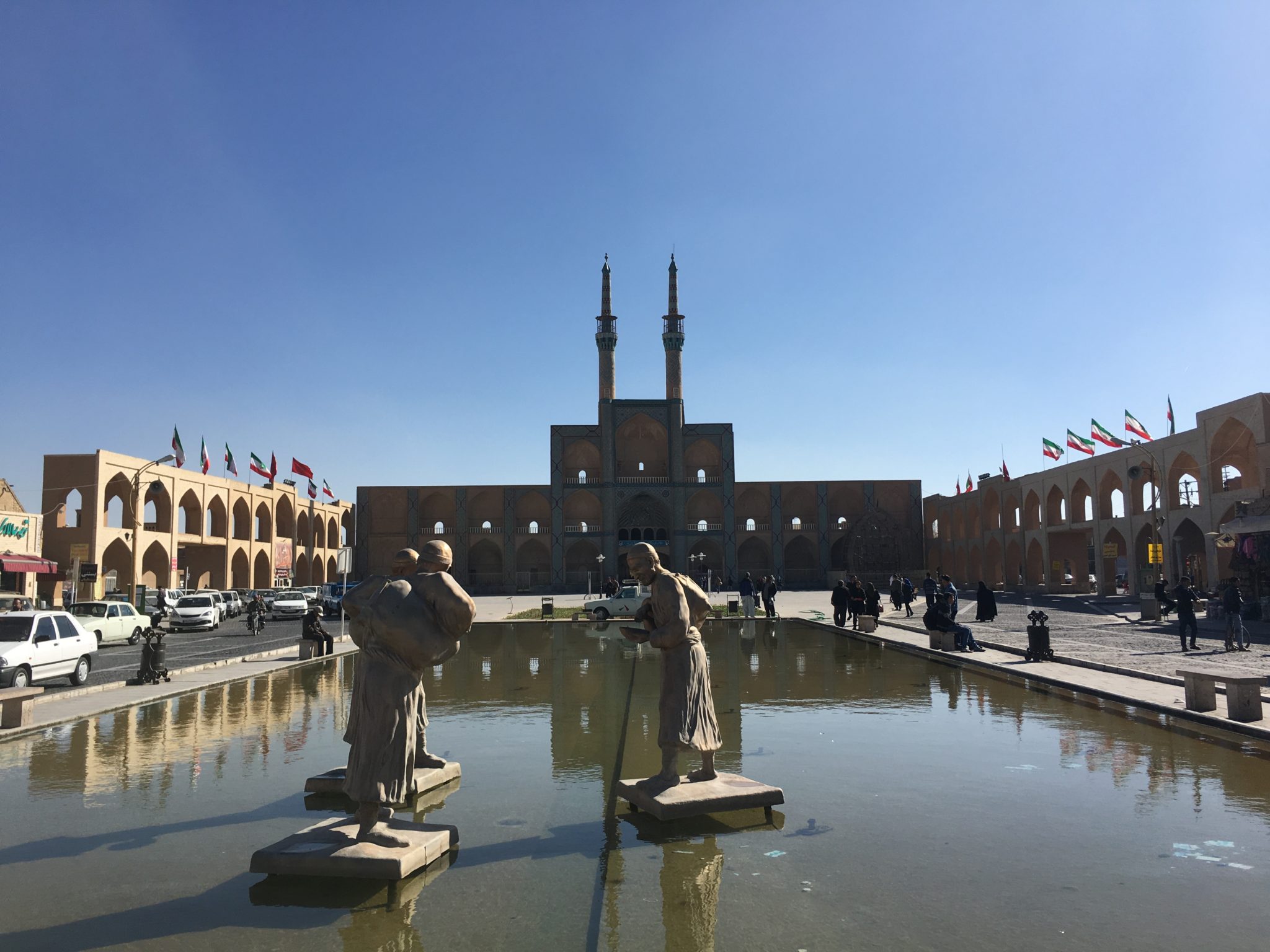
Have you slept in the desert before? It was actually our first time and we were really excited! During my travels, I have passed by the Gobi desert (Mongolia) and the Sahara desert (Morocco), but I have actually never stayed overnight before. The sand dunes in Vietnam and Australia are not really counted as desert as they occupy a small area only.

I booked one night with Desert Nights Camp as the reviews were good and they seemed to be one of the more luxurious camps in the desert. Since we did not have a 4WD, the hotel offered a complimentary pickup service from the Al Maha petrol station in Al Wasil, a ride which took about 15 minutes on sandy roads to reach the hotel grounds. Along the way, we had a glimpse of endless sand dunes and some camels walking under the sweltering heat. They could bear with the heat better than us because their body is adapted to surviving in such harsh conditions.

A destination in their own right, or a diversion between Muscat and Sur, Wahiba Sands could keep visitors occupied for days. Home to the Bedouin, the sands offer a glimpse of the traditional way of life that is fast disappearing as modern conveniences limit the need for a nomadic lifestyle.

The sands are a good way to interact with Omani women whose Bedouin lifestyle affords them a more visible social role than many other rural women. They wear distinctive, brightly coloured costumes with peaked masks and an abaya of gauze, and are accomplished drivers, often coming to the rescue of tourists who get stuck in the sand. They are also skilful craftspeople and may approach you with colourful woollen key rings and camel bags for sale.


At Deserts Nights Camp, it offers ‘bush chic’ for those who want to see the sands but don’t really want to engage with them. The compact, canvas-roofed cabins are impeccably designed with boutique furnishings and seating areas, bar and reception area are decked with Omani antiques. There is 24 h electricity, year-round air-conditioning and hot-water showers (not sure why people need this in the desert), so you can pretend you are anywhere but in the desert.


Around 5.45pm, we gathered at the reception for a free ride up the dunes to catch the sunset. At first I was looking forward to ride the camels, but the staff told us that the camels had no energy as the heat is really strong, so we could use only our own legs for hiking and to guide each other along the way. In the past, the evening activity included a short ride on camel in the desert.

In terms of food, the camp offers a good variety of food during their dinner and breakfast buffet. Since we did not get a package with the hotel, we added on the supplement for breakfast RO5 (S$18) and the dinner buffet was RO7.5 (S$27). They served a variety of local Omani food, Indian as well as international cuisine. During dinner, the chef was barbecuing the meat on the spot and the spices they used were really fragrant. For breakfast, there was an eggs station where you can decide how you want your eggs to be cooked. The chef was also making waffles, served with crushed nuts and maple syrup.




The camps are often quite expensive for what they offer. Even the activities at Desert Nights Camp were ridiculous expensive, so we chose not to engage in their activities except for the sunset drive and relaxing at the lounge corner while waiting for dinner to be served. For example, it cost RO30 (S$108) for a 30 min quad bike ride per person, and each quad bike can only carry one person. Desert Nights Camp also offers trekking in the desert with a guide, visit to a local Bedouin house, camel safari, sand boarding and many more activities.

Overall we paid RO30 (S$107.80) to stay for one night at Desert Nights Camp. This is the low season price as their room rates can go up to RO150 (S$540) during the high season for half-board (breakfast and dinner provided). Our additional costs also came from having one dinner and one breakfast at the camp which was a total of RO25 (S$90) for the two of us, as we did not have transport to drive around and there were no other food outlets nearby. I would recommend just staying one night here for the experience and if you are confident, you can drive your 4WD through the desert, staying on the sand tracks and see if you can visit some Bedouin houses along the way.
Other places to stay in Wahiba Sands:
- •Nomadic Desert Camp
- •1000 nights
- •Al-Areesh camp
- •Al Raha tourism camp

Tips on driving in the desert
If you are driving a 4WD through soft sands, it can be an exhilarating but also unnerving experience. Here are a few tips to take note:
- •Deflate your tyres slightly at the edge of the sands to help with traction.
- •Avoid driving on graded desert tracks with deflated tyres – this is the quickest way to a puncture.
- •Accept the locals’ help if you get stuck in the sands.
- •Strap down any loose luggage in the car to prevent it from flying around as you go over a sand dune.
- •Engage 4WD but use only low ratio if you feel the vehicle labouring.
- •Keep the speed up, especially on inclines, and avoid steering over high dunes.
- •Don’t stop, aim for pockets of hard ground between soft sands if you need a break.
- •If a Bedu suggests an alternative route to your camp, expect to tip OMR15 for a short guiding service.
- •Remember to reinflate your tyres at the nearest village before driving too far on sealed roads after leaving the sands.

